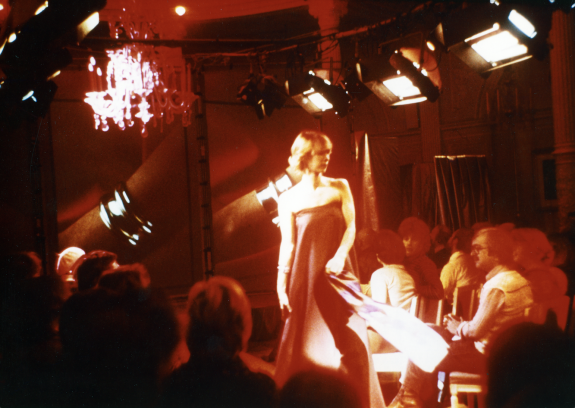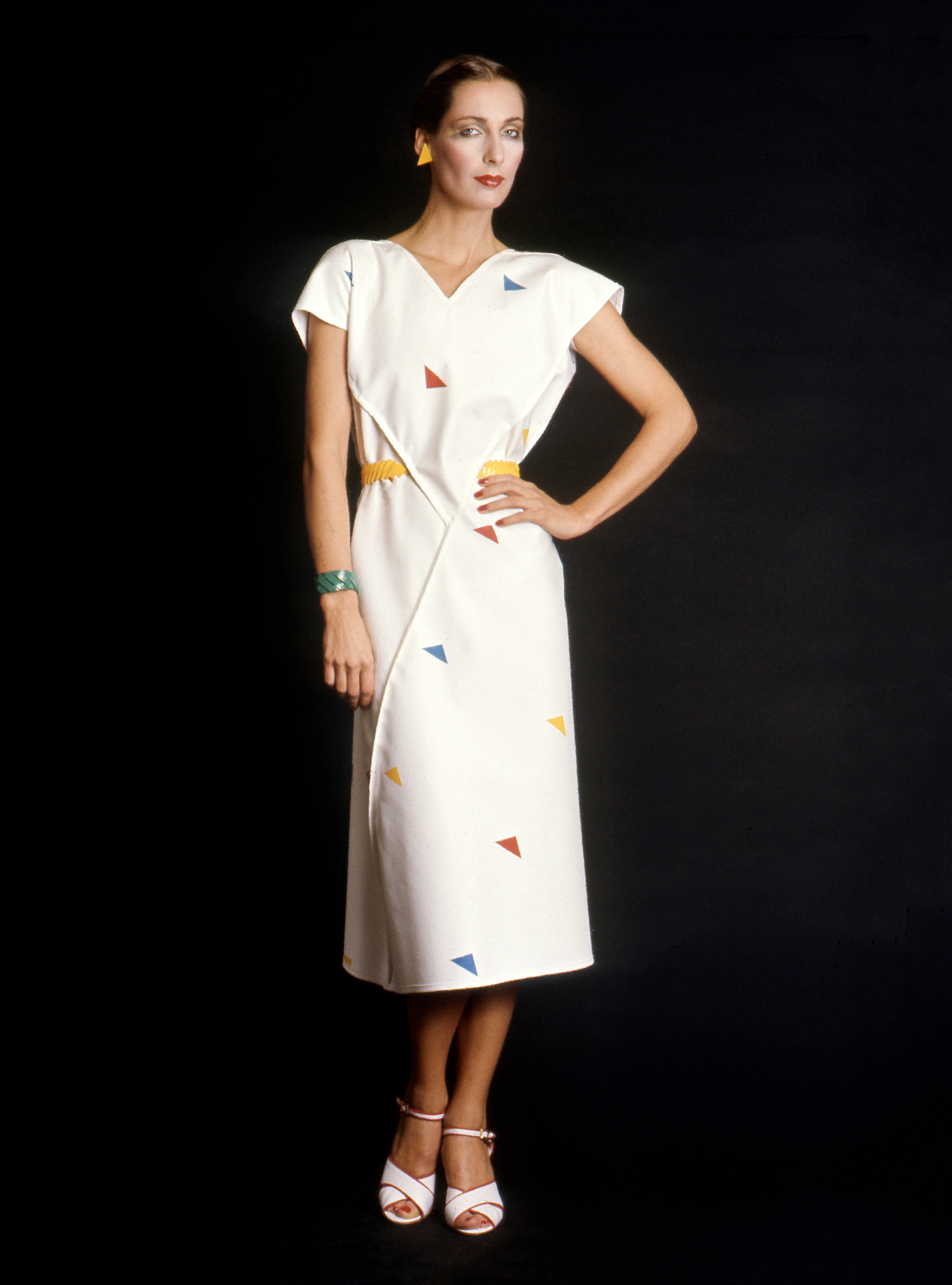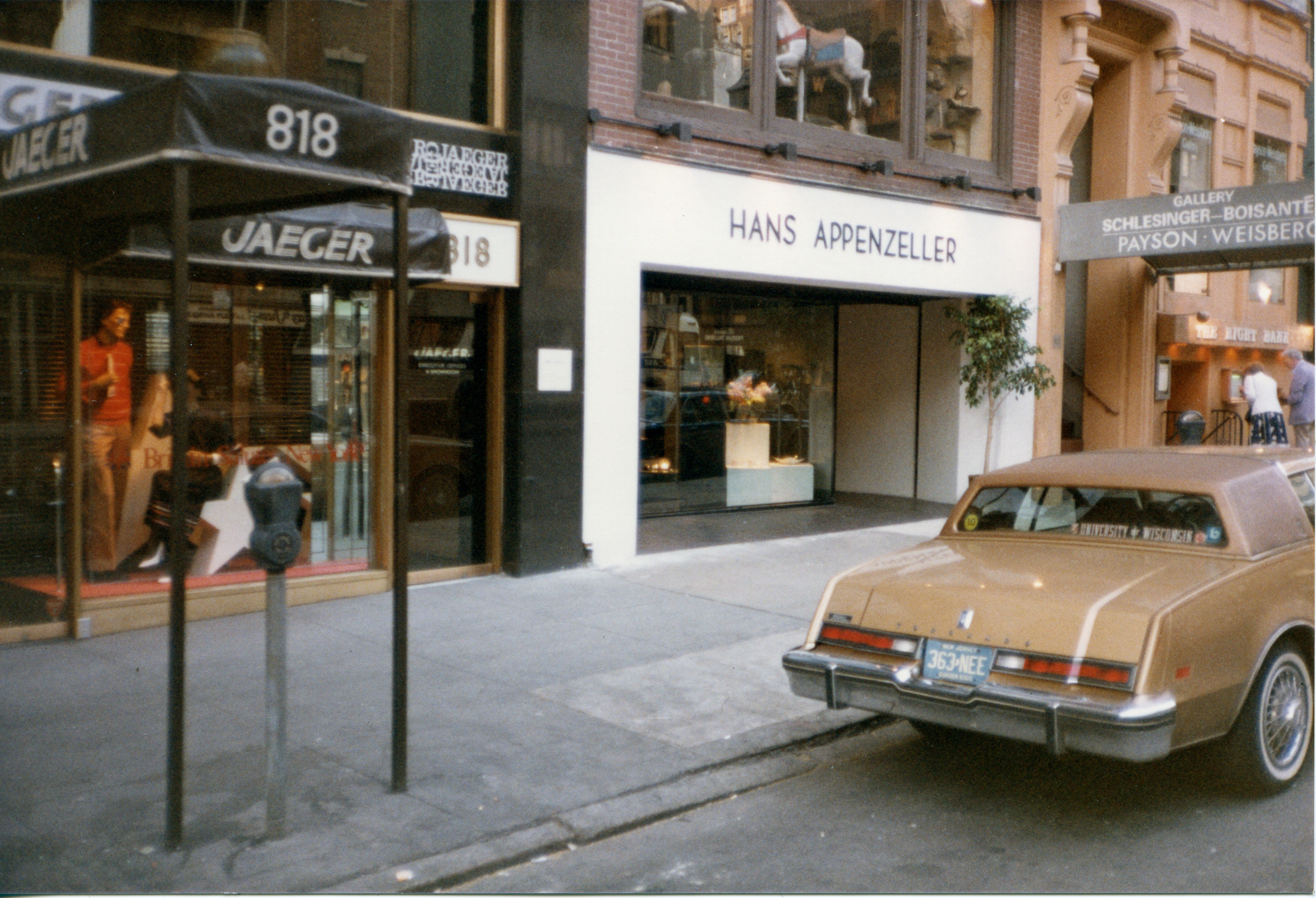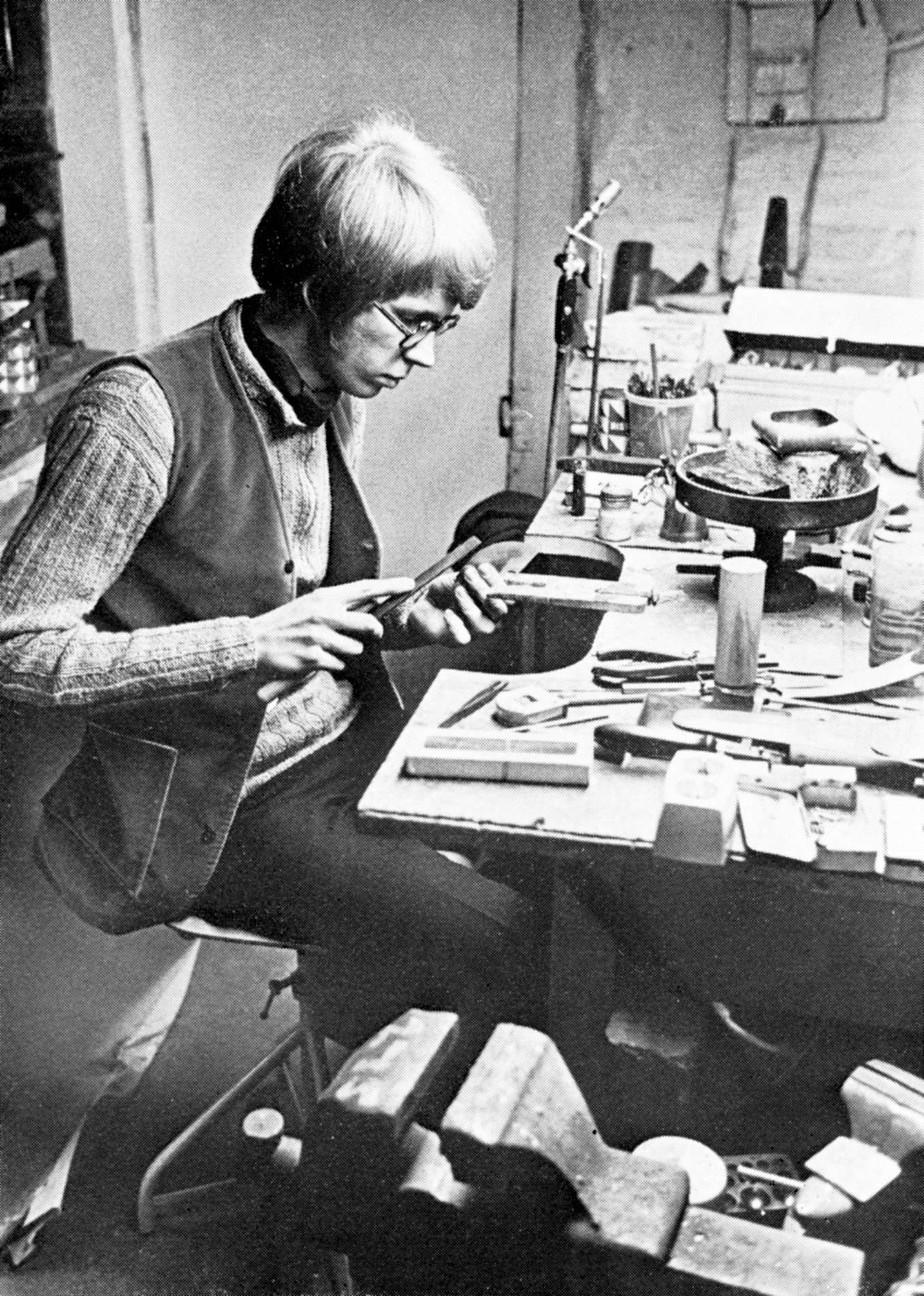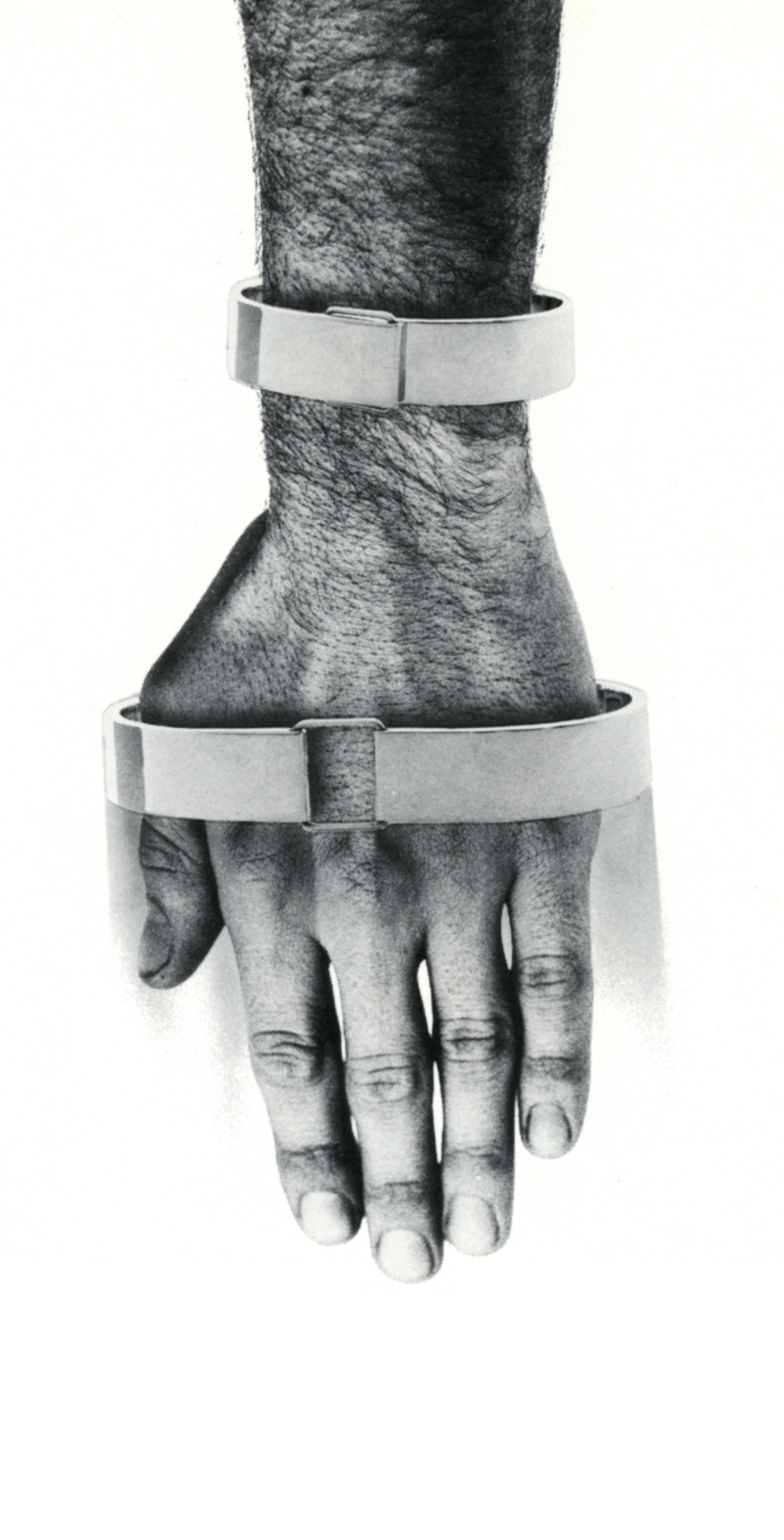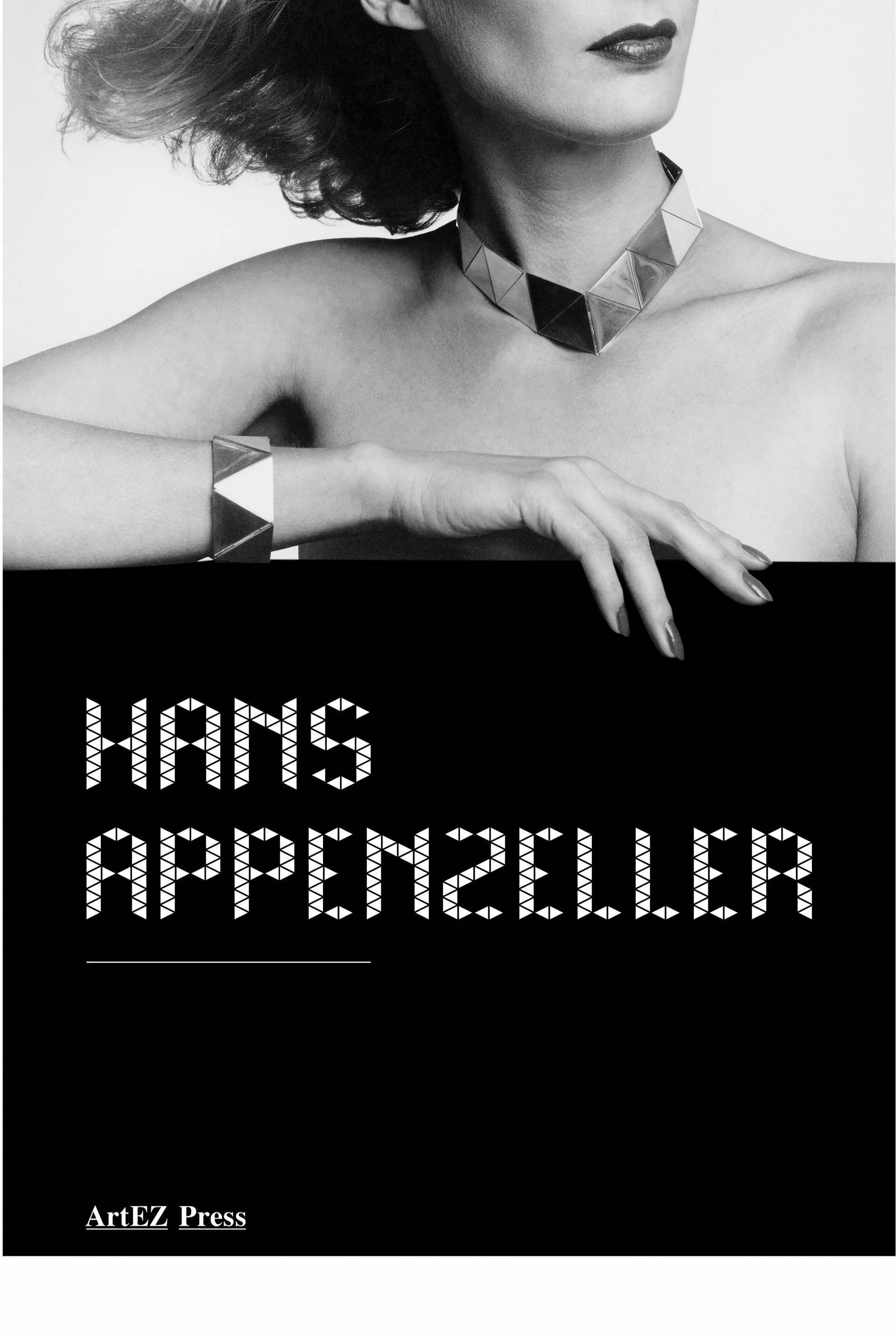
appenzeller
Jewelry Designer Hans Appenzeller
Jewelry designer Hans Appenzeller (1949) makes jewelry to be shown on the body; 'My jewelry does not belong in a showcase. They only come to life when worn. They move in a natural, almost organic way,' says Appenzeller. In 1969, a year before graduating from the Rietveld Academie, he opened the first jewelry gallery in the Netherlands, Gallery ‘Sieraad’, together with Lous Martin. He organized various exhibitions and showed his jewelry, in combination with clothes specially designed by Jan Aarntzen, in spectacular 'catwalk shows’. He opened his shop in Amsterdam in 1975, in 1977 he moved to his current premises at Grimburgwal 1.
In 1983 Appenzeller opened galleries in New York, on Madison Avenue and West Broadway in Soho. He returned to Amsterdam in 1991 to focus more on design. He received many awards, was one of the pioneers of the development of cutting-edge innovations to make jewelry with aluminum, plastic, rubber and all kinds of other new materials. This resulted in the famous 'Klaparmband': the clasp is operated by the flexibility of the wrist. His jewelry was worn by many celebrities, including Andy Warhol and Tina Turner.
Hans Appenzeller:
When I was a child, I made jewelry from coconuts or anything else I had; I love to create. Nobody had to tell me anything or tell me what to do. I have always been that way; I have a conscious lack of ego. At a young age I followed my own path, I knew what I wanted to look at, what was important and inspiring. I created my own freedom and kept on going until I achieved what I wanted to achieve.
I learned how to design at the Gerrit Rietveld Academy. I started my design course in 1966 without a preconceived plan, the only thing I knew was that I wanted to do 'something creative'. In the base year I followed some series of 'professional class introductions' in the Architecture department. Architecture fascinated me, but during that introduction I realized that as an architect you are dependent on clients, regulations, implementers and the people who will eventually use your design. Two doors further, I saw students making jewelry, the thing I loved when I was a child. When designing jewelry, you are independent, that's what I've chosen. People can love or hate my jewelry, no hard feelings. I'm not depending on assignments and I'm free in my designs. I like the combination of designing and creating, every year I design a new collection.
My education at the Gerrit Rietveld Academy was a great combination of technique and design. The academy brought together various study programs supporting design. In 1969, I opened the first jewelry gallery in the Netherlands with Lous Martin. Not only did we sell our own designs, we also sold the work of twenty other designers. That was innovative, it was art. We demonstrated a new movement; it was a time of innovations and we used materials that had never been used before. It was revolutionary.
You don't always have to use gold and diamonds in jewelry designs. You can of course, but it's not necessary. I designed bracelets out of rubber and organized shows based on the idea that I wanted to show my jewelry on the body. In the Concertgebouw I organized catwalk shows together with fashion designer Jan Aarntzen in which models wore clothes and jewelry specially designed for the show. At the end of the show the models threw the rubber bracelets into the audience, it was all very exuberant and spectacular.
Not many shows were organized in those days, so what we did was very special. In the show that took place in the Stedelijk Museum Amsterdam, we projected the clothes and jewelry on big screens. Precisely this revolutionary rebellion against the established order created a useful and fertile breeding ground for renewal. It was a time of disengaging from standard ideas, time for change and renewal. Of course, many people didn’t want to have anything to do with modernization and continued wearing their pearl necklaces, which was also fine.
When interest in the gallery declined, I started my own shop on the Singel in Amsterdam. In 1977 I moved to the Grimburgwal, where my jewelry shop is still located.
From the beginning of my career I have been trying to find practical solutions for the fact that a hand is bigger than a wrist. In my designs I don't want to use basic box clasps and hinges, that's old-fashioned drabness. I came up with all kinds of solutions like the ‘Klaparmband’. This bracelet is the ideal result of the right input. You take the size of the hand and the size of the wrist. Once you've found the solution, a new problem arises; every hand and wrist are different. I have to take that into account as well. I customize everything for the people who choose my jewelry; I don't design for display cabinets.
A couturier fits his designs on the body to check the measurements, likewise with custom made jewelry. I don’t offer a standard design in a catalog; you can't order my special designs online. Until recently I didn't have a web shop, I also don’t have special sales or late shopping nights. Andy Warhol and Tina Turner have worn my jewelry which is really great, of course it’s a great thing but it doesn't influence my actions. Of the 100 people that walk past my shop, perhaps only one person will be enthusiastic about my designs and I am totally happy with that.
The V-Mesh bracelet originated from the query how to make metal flexible. I discovered that the best clasp is no clasp. This bracelet doesn't have a clasp, it just slides over the hand. It sits well around the wrist, doesn't open by itself and doesn't have an ugly break in it. The design is pliable, flexible, but not stretchy. They are spirals with sticks in them, like tracks. If it has the right size, it sits perfectly around the wrist and stays perfectly in place.
The Bamboo bracelet can be flattened, you slide through it with your hand, it then ‘explodes’ and sits tight around the wrist. Designing takes time, my designs originate from my knowledge of materials and techniques. I am aware of the properties of different materials and what is or isn’t possible. For the setting of gemstones, I came up with new solutions that resulted in innovative designs. I designed a ring with tapered tubes in which you can put gemstones. The tapering of the tubes gives the bulge, soldering the tubes next to each other creates a circle. The whole ring consists of tubes as settings. It's a wonderful feeling when I manage to create a design.
In New York I exhibited in two galleries that attracted a lot of interest. However, to gain reputation, continuity was needed, so I planned to open my own shop in America.
I was looking for ways to find investors, nowadays you would call the way I raised the money crowdfunding. I succeeded and managed to open my first store on Madison Avenue. Later on, I opened a second store on West Broadway. The store in Amsterdam also stayed open and every three weeks I flew between New York and Amsterdam which worked fine for me.
At that time my customers in America were more open to spectacular and innovative designs than in the Netherlands. The Americans looked at my jewelry in a different way and they dared to wear bold designs. In New York they didn't know the Dutch simplicity, so I contributed to creating a sense of simplicity. I designed jewelry with a diversity of huge gems, which was unacceptable for the Dutch but which the Americans loved.
We learned a lot in America. Only when we were ram raided and everything was stolen, we realized that we had to take the jewelry out of the windows after closing time.Another thing we learnt through trial and error is the American way of publicity. It definitely is a specific science and completely different compared to the Netherlands. An example: a New York Times journalist was supposed to drop by at the opening and write an article about us; she had already sent a photographer along. But after John Duca, a columnist for The New York Times, mentioned us in his column, she never showed up. Apparently, we had spoken to the wrong person, we had no clue on how these things worked.
After a nine-year adventure in New York, we returned to the Netherlands and I wanted to focus entirely on designing. Meanwhile the Dutch were enthusiastic about the use of gemstones in my designs and especially about the new solutions I came up with to incorporate them into jewelry. Each gemstone had its own setting.
My jewelry is showcased in a unique way. It's important that people are allowed to have a glimpse of my designs, that’s why you see only small parts at a time in my display cabinets. What really makes my heart jump is the alluring way shop windows are presented in Paris.
It is obvious that people in the street are enjoying life. I am happily surprised to see how the Parisians show their daring dress sense; every detail is taken into consideration.
I am amazed to notice that many jewelry designers focus mainly on designing beautiful shapes that could be considered as art, instead of concentrate on the person who eventually will wear their jewelry. In my view you don’t call it jewelry if it’s not worn by somebody. My jewels are complemented by the inspiring connection with the person who eventually will wear them and that’s my only goal. Without a person in mind, I can't design. If my clients have suggestions how to improve a design, I can take that into account. Perhaps I can make it even better, more spectacular or more wearable. That’s called growth.
I listen to what my clients have to say, but I don't conform. When pearls are in fashion, I won’t suddenly use pearls in my jewelry. I really appreciate it when people are enthusiastic and wear my designs. Sometimes I have to wait three years for it, sometimes it happens ten times a day. But that's my goal; a customer who is enthusiastic about my jewelry is more important to me than a good review in the newspaper. I will only give a discount on a piece of jewelry if a customer turns up and shows me their well worn-out object that was designed by me. To me it’s important my jewelry looks great.
Everyone designs their own life; you can make choices. What clothes do you want to wear, which house do you want to live in, what partner will you choose and which dreams are you going to follow? Design is finding the answers to all this. Designing can be about anything, shall I buy a new phone, or perhaps not. What do you look for in the chair you want to buy? Anything is possible.
I organize my life in such a way that I have no obligations. I don't make appointments unless there's no other way. I absolutely have no interest in committing myself, I don't even make appointments for dinner. If someone would like to meet me, I'm sure it will happen spontaneously. Why should I commit myself, I can be as free as I like to be. An essential part of my freedom is to be able to decide for myself what I do at any given time. It makes me happy when I can decide to go to a museum when I feel like it.
I have not turned out to be the type of designer that needs to show his face everywhere.
Which is great; I'm free in what I have to do or have to maintain. There's no expectation at all. I don't have to live up to anything for my ego either. When I notice that in other people, I always think that must be an exhausting way to live. Building a career, you aim to become better, more famous and more attractive. The digital possibilities are very different now than they used to be. When you were located in Amsterdam, they didn’t know you in Amstelveen anymore. That was too far away.
I am not interested in opinions; I am interested in finding out the best way. I've always had the ambition to be good at what I do; not because of gaining admiration, or aiming for perfection but out of sheer enthusiasm. It's great to be challenged, many people don't seem to aspire to that. I can't imagine living without challenge.
Are you planning on organizing an overview exhibition in a museum in future?
I once organized a vase exhibition above my shop, in collaboration with the Glass Museum Leerdam. That was very special, but organizing an exhibition is also a lot of work. I've coordinated various exhibitions; I was a curator for Sonsbeek for two years. When the director of the Tropenmuseum called Benno Premsela and asked if he knew someone who could organize an exhibition on jewelry, he said: 'There are two people who will be able to do that and I won’t do it, the other one is Hans Appenzeller.' It was a great job; it is a rare occasion to be asked to initiate something. A publisher did ask me to create a book though, I've been making jewelry now for more than 50 years and I think that is special.
In case a retrospective of my work might be organized, I will have my specific demands. I am not going to organize it anymore; I don't feel the need. In my shop I have stored all the designs of the 'Appenzeller Museum' in large boxes. This is historical material, including unique specimens that have never been sold. I have previously shown this collection in museum Singer Laren. An exhibition should look at least as good as my shop. When people walk in my shop, I reserve time for them. It is hardly possible to speak to anyone personally during an opening event or show my own work. Personal attention is very important to me, that’s what I want to give to every person in my shop. I even find it hard to go out with more than two people.
Benno Premsela used to have a soiree every Saturday afternoon where all kinds of artists and other celebrities were invited. I thought it was great that he organized it, but I thought it was terrifying and I was far too shy to attend such events. That's the way it is. I am thinking of buying a new house; we move once every ten years. But my partner has indicated that we should stay where we are, until we go to our final destination. We're living on the 23rd floor at the Zuidas in Amsterdam and we have fantastic views. In addition, we have a cottage in France in the countryside with 5 hectares of forest. Life is wonderful as it is now.
What I find very beautiful is that, retrospectively, I realized what I have done in an unconscious way. Partly it was consciously, I've always been convinced that designing is created by the problems that you would like to solve. Now, after 50 years, I see very clearly what has driven me over the years. I am now 70 years old and I still enjoy what I do every day. Sometimes I am here in my shop, but not always. I do it for fun, I'm not going to punish myself by deciding not to design anything anymore. I am a happy person.
Hans Appenzeller
Grimburgwal 1
Amsterdam
www.appenzeller.nl
